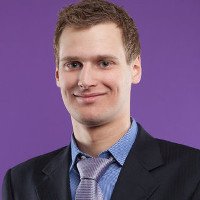Integro-partial differential equation models for cell-cell adhesion and its application
Published in University of Alberta, 2018
Abstract: In both health and disease, cells interact with one another through cellular adhesions. Normal development, wound healing, and metastasis all depend on these interactions. These phenomena are commonly studied using continuum models (partial differential equations). However, a mathematical description of cell adhesion in such tissue models had remained a challenge until 2006, when Armstrong et. al. proposed the use of an integro-partial differential equation (iPDE) model. The initial success of the model was the replication of the cell-sorting experiments of Steinberg. Since then, this approach has proven popular in applications to embryogenesis, wound healing, and cancer cell invasions.
In this thesis, I present a first systematic derivation of non-local (iPDE) models for adhesive and chemotactic motion. For this purpose, I develop a framework by which non-local models can be derived from a space-jump process. I show how the notions of cell motility and cell polarization can be naturally included. The significance of such a derivation is that, it allows me to take cell-level properties such as cell-size, cell protrusion length or adhesion molecule densities into account. Thus this derivation validates these popular non-local models. I show that particular choices of these properties yield the original Armstrong cell-cell adhesion model. Finally, I extend the cell adhesion model to include volume exclusion, and complex cell adhesion molecule kinetics.
In Chapter 3, I present a first in depth analytical study of the steady-states of the non-local cell adhesion model derived in this thesis. The importance of steady states is that these are the patterns observed in nature and tissues (e.g. cell-sorting experiments). As a prerequisite to the subsequent analysis, I present an in depth study of the properties of the non-local cell adhesion operator. I present results on its continuity, compactness, and spectral properties. I then combine bifurcation techniques pioneered by Rabinowitz, equivariant bifurcation theory, and the properties of the equation’s solution, to obtain the existence of an unbounded bifurcation branch of non-homogeneous solutions. Using the equation’s symmetries, I further classify the solution branches by the derivative’s number of zeros (i.e., number of extrema remains fixed). Significantly, this parallels the classifications of solutions of nonlinear Sturm-Liouville problems and equivariant nonlinear elliptic equations. I identify the bifurcation type as pitchfork, and show that integration kernel in the non-local term determines whether an immediate switch in the solution’s stability takes places. Finally, using numerical techniques, I verify my analysis, and demonstrate the existence of rotating waves of steady states.
In the final chapter, I extend the non-local cell adhesion model to a bounded domain with no-flux boundary conditions. In the past, boundary conditions for non-local equations were avoided, because their construction is subtle. I encounter three challenges: (1) ensure the non-local operator is well-defined near the boundary, (2) ensure that the non-local operator satisfies the no-flux boundary conditions, and (3) the constructed non-local operators are non-unique in the boundary region. I address the first challenge by introducing spatially dependent integration limits. While more complicated, the new non-local operators share many of their mathematical properties with the periodic non-local operator. However, the spatial dependence of the integration limits complicates differentiation. Indeed, the theory of distributions must be used, to compute the non-local operator’s weak derivative. Using the model’s derivation, I ensure that the constructed operators satisfy the no-flux boundary conditions. Finally, I classify the constructed non-local operators, by comparing their action to the periodic non-local adhesion operator, into either repellent, neutral, or attractive. It is however, an open problem to match these newly constructed non-local operators to cell behaviour near physical boundaries.
This publication is part of the Non-local models of cell-cell adhesion project.
Recommended citation: Buttenschoen, A. (2018). Integro-partial differential equation models for cell-cell adhesion and its application.
Download Paper
